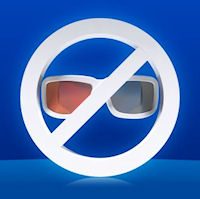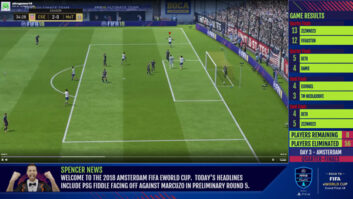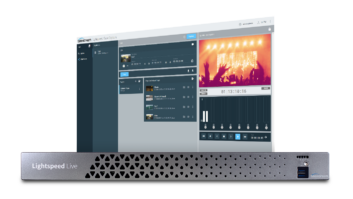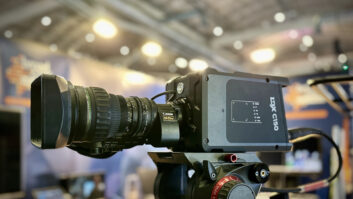
A Siberian-based developer has devised software which translates stereoscopic content in realtime, for viewing on glasses free displays. Triaxes Vision claims to have received interest from the Russian Federal government, BSkyB and the BBC.
Triaxes uses an algorithm that decodes the twin stereo pictures it receives into stereo pictures plus two depth (Z information) maps. Most other autostereo algorithms use just the one HD frame of 2D + depth.
“Our aim is to make a universal format compatible for 2D HD, with glasses and autostereo displays so that a broadcaster can transmit just the one channel and the picture will be decoded according to the display consumer’s have,” said Dmitry Bimatov, senior software developer at Triaxes. “With existing infrastructure you require three streams but the aim is to wrap them into one. We are talking with the Russian government about this, so that when they launch stereo 3D services they can transmit 3D content to the broadest number of viewers.”
Giles Kimminau, a UK-based consultant working with Triaxes, has shown the system to the BBC and BSkyB.
“I spoke to their research departments since both are looking toward the future and neither believe that glasses 3D is the long term answer,” he said. “The BBC believes autostereo won’t be ready for the mass market for a decade. BSkyB is also looking to understand what comes next since and its main concern is that any advance in 3D services require as little impact on its current transmission infrastructure and hardware in the home as possible.
“The main hurdle is not the rendering or depth perception of the technology, but the quality of displays to generate multiple views at high resolution. The introduction of 4K flat panels may solve that, but right now they are too expensive.”
Triaxes’ technology accepts the left and right views and analyses the difference between the frames to create a grey scale depth map which autostereo displays then incorporates to transmit multiview images via lenticular or parallax barriers on the screen. Dimenco’s latest display, for example, features 28 different views.
“Each manufacturer has their own input format but we are trying to make a uniform format that is supported by each,” says Bimatov. “The main challenge with conversions using one frame and one depth map is that when different views are generated the display doesn’t know and therefore can’t render information behind foreground objects. With two frames and two depth maps we can resolve that.”
Triaxes’ exclusive displays partner is Dimenco (a Philips spin-off) and is the official distributor of Dimenco ASDs (auto stereoscopic displays) in Russia. Dimenco is Triaxes’ affiliate in the Netherlands. It is currently looking to obtain support for its technology with other ASD manufacturers including, Alioscopy, Magnetic 3D, Tridelity and Miracube. Display producer CelVision is also testing the Triaxes software compatibility with their displays.
Triaxes is part of the Elecard Group, a Tomsk-based signal processing specialist. Both companies are featured at IBC booth 2A.28.
www.triaxes.com







